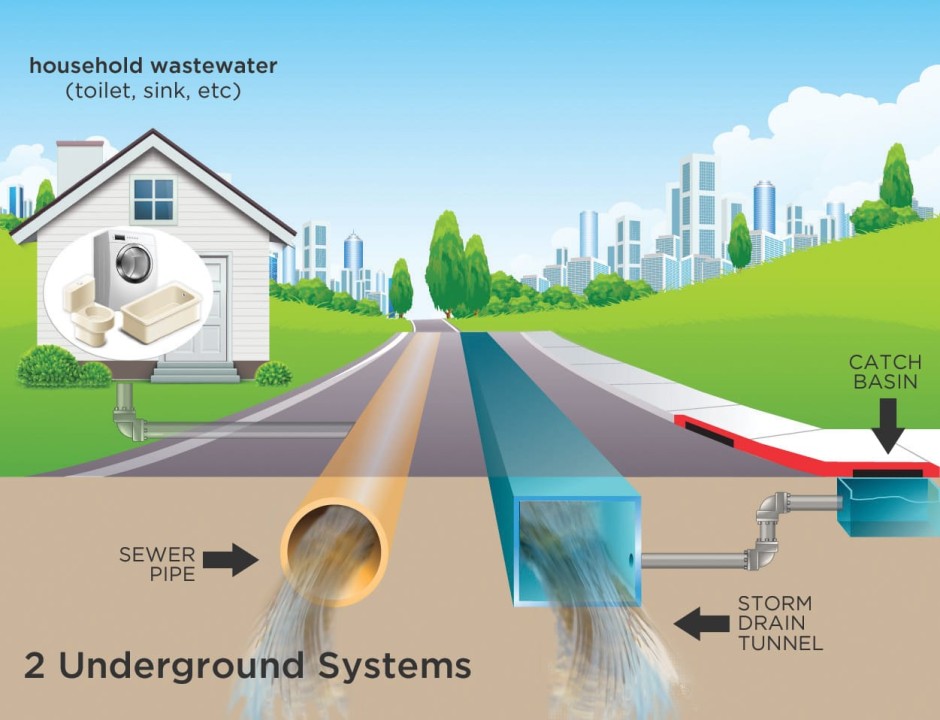
Importance of Effective and Efficient Storm Water Drainage System and its Requirements
An effective and efficient stormwater drainage system is crucial for several reasons:
Flood Prevention: The primary function of a stormwater drainage system is to manage and direct excess rainwater and runoff, significantly reducing the risk of flooding in urban and suburban areas.
Public Safety and Health: Flooding can pose serious risks to public safety and health. Stagnant water is a breeding ground for disease-carrying insects like mosquitoes. A good drainage system helps prevent these hazards.
Infrastructure Protection: Flooding can cause substantial damage to roads, buildings, and other infrastructure. Proper stormwater management protects these structures and reduces repair costs.
Environmental Protection: Efficient stormwater management helps in reducing pollution entering water bodies. It can filter and treat stormwater runoff, thereby protecting rivers, lakes, and oceans from contaminants.
Water Resource Management: An effective system can also help in harvesting and recycling rainwater, which is a valuable resource, especially in water-scarce regions.
Urban Development and Planning: Robust stormwater systems are essential for sustainable urban development. They allow cities to manage increased runoff due to urbanization and climate change.
Economic Benefits: Investing in good drainage infrastructure can lead to long-term economic benefits by preventing flood damage, reducing maintenance costs, and enhancing the overall resilience of a community.
Quality of Life: Effective stormwater management contributes to the overall quality of life in urban areas. It ensures clean, safe, and pleasant living environments.
In summary, an effective and efficient stormwater drainage system plays a vital role in managing water resources, protecting public health and safety, preserving the environment, and supporting sustainable urban development.
Requirements of Effective and Efficient Stormwater drainage system:
Designing an effective and efficient stormwater drainage system requires a comprehensive approach that considers local environmental conditions, urban infrastructure, and sustainable water management practices. Here are key steps and considerations:
Assessment of Local Conditions:
Study the local climate, rainfall patterns, and frequency of storms to estimate the volume and intensity of runoff.
Analyse the topography, soil type, and existing water bodies to understand how water naturally flows and accumulates.
2. Hydrological and Hydraulic Modeling:
Use models to simulate water flow and predict runoff for various storm scenarios. This helps in sizing the drainage infrastructure appropriately.
3. Integrated System Design:
Design a system that integrates street gutters, catch basins, pipes, and channels. Ensure that it has adequate capacity to handle peak flow rates without causing flooding.
4. Sustainable Urban Drainage Systems (SUDS):
Incorporate SUDS elements like rain gardens, permeable pavements, green roofs, and swales. These features help in managing runoff at the source, reducing the load on the drainage system.
5. Retention and Detention Basins:
Design basins to temporarily hold stormwater and release it slowly, preventing overload on the system and reducing the risk of flooding.
6. Water Quality Management:
Include features like oil separators, sedimentation basins, and biofilters to improve the quality of runoff before it is discharged into natural water bodies or reused.
7. Climate Resilience:
Design the system to be resilient against changing climate patterns and more frequent extreme weather events.
8. Maintenance and Accessibility:
Ensure the system is easily accessible for maintenance. Regular cleaning and inspection of drains, pipes, and basins are crucial to maintain functionality.
9. Public Involvement and Education:
Engage the community in the planning process and educate them about sustainable practices like rainwater harvesting and reducing surface runoff.
10. Regulatory Compliance:
Ensure the design complies with local regulations and standards, which may dictate specific requirements for stormwater management.
11. Innovative Technologies:
Consider using smart technologies for real-time monitoring and management of the drainage system.
By combining traditional engineering practices with sustainable water management strategies, an effective and efficient stormwater drainage system can be designed to mitigate flooding risks and enhance urban water management.
PMC HSE Manager Hill international (Approved Saudi Aramco-MOI-MOH-KAFD-FURSAN NHC -Jabal omar project Makkah )
5moexcellent
Professional Engineer|Transport Systems Designer|Sustainable Mobility Practitioner
5moUse of underground Space
Civil Engineer Project Manager infrastructure &Freelance Marketing of Engineering products at Dandy Products, Inc.
5moThank you for sharing.